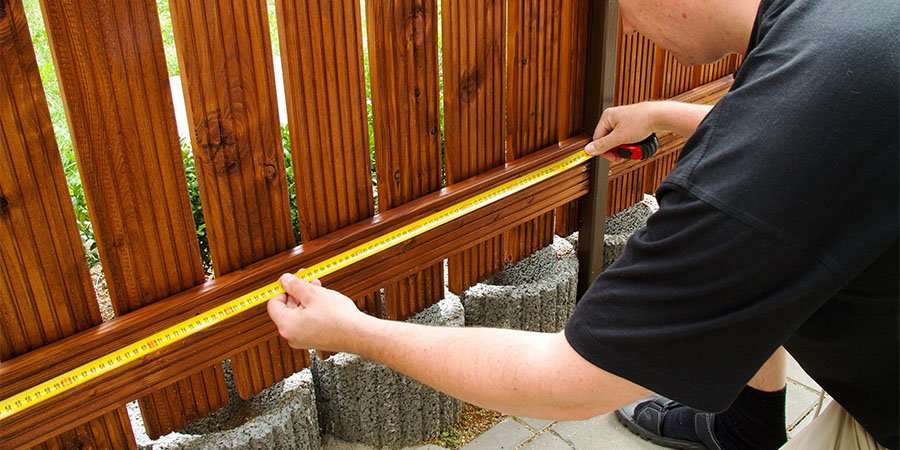All Categories
Featured

Picking the ideal fencing product for your building is a decision that balances aesthetic appeals, performance, and budget. Amongst one of the most preferred choices, wood, plastic, and light weight aluminum each offer one-of-a-kind benefits and drawbacks. Understanding these can aid you make an educated choice that aligns with your demands. Right here's a failure of the advantages and disadvantages of these three typical fencing products.
Wood Fencing. Timber secure fencing has been an ageless option for property owners as a result of its all-natural appeal and adaptability.
Pros:. Aesthetic Appeal: Wood supplies a traditional and cozy appearance that complements a range of architectural styles. Personalized: It can be painted, discolored, or cut right into special designs to match personal choices. Economical: At first, timber fencing can be an economical choice contrasted to various other products. Eco-Friendly: Wood is an eco-friendly source and can be sustainably sourced. Disadvantages:. High Upkeep: Timber requires routine sealing, discoloration, or painting to avoid rot, insect damages, and weathering. Toughness Problems: Without proper care, wood can warp, fracture, or degeneration gradually, especially in areas with high humidity. Shorter Life-span: A timber fencing normally lasts 10-20 years, depending upon the sort of wood and level of upkeep. Wood is suitable for those who value a traditional appearance and are ready to commit to its maintenance.
Plastic Secure Fencing. Plastic is a modern-day, low-maintenance fencing choice that has grown in popularity in the last few years.

Pros:. Low Maintenance: Vinyl does not require paint, discoloration, or securing and can be easily cleaned with soap and water. Weather Resistant: It stands up to severe climate condition without deteriorating, rusting, or warping. Durable: Plastic fences can last 20-30 years with marginal upkeep. Range of Styles: Readily available in many colors, layouts, and appearances, some plastic options simulate the look of wood. Cons:. Higher Upfront Cost: Vinyl secure fencing can be a lot more pricey originally compared to wood. Brittleness in Cold Weather condition: In extreme cold, vinyl might fracture or become weak. Limited Repairs: Individual panels can be hard to replace, requiring mindful matching to the existing fencing. Vinyl is best matched for homeowners seeking a sturdy, low-maintenance option with modern appearances.
Light Weight Aluminum Fence. Aluminum secure fencing is a durable and light-weight choice, commonly picked for its modern-day appearance and flexibility.
Pros:. Rust-Resistant: Light weight aluminum does not corrosion, making it an outstanding selection for wet or humid environments. Low Upkeep: Calls for minimal upkeep and is simple to tidy. Resilient: While lightweight, aluminum is solid enough to endure several ecological conditions. Long Life expectancy: Can last several decades without substantial wear or damage. Range of Styles: Supplies a sleek and classy look, often used for decorative or ornamental purposes. Disadvantages:. Higher Cost: The preliminary financial investment for light weight aluminum fence is greater than timber or plastic. Less Privacy: Light weight aluminum fencings are commonly created with open pickets, making them less efficient for personal privacy. At risk to Dents: Although long lasting, aluminum can be nicked by solid effects. Light weight aluminum is excellent for those seeking an elegant, long-lasting alternative that requires minimal care.
Making the Right Choice. Each fencing material-- aluminum, plastic, and timber-- offers distinct benefits and disadvantages. Your decision should depend upon your details concerns, such as budget, upkeep choices, environment, and visual goals:
Pick timber if you love a typical look and don't mind normal upkeep. Choose plastic if you want a low-maintenance, weather-resistant fencing with contemporary charm. Choose light weight aluminum if you focus on longevity, corrosion resistance, and a smooth style. By weighing these cons and pros, you can pick a fence material that improves your residential or commercial property while meeting your functional demands.
Latest Posts
Explore WyHy FCU – Top Benefits for Members
Published May 25, 25
1 min read
Find Outstanding Car Repair Care in Chicago – Quality Service Today
Published May 24, 25
1 min read
Boost Your Home's Outside with Weathercraft's Home siding Solutions
Published May 23, 25
1 min read